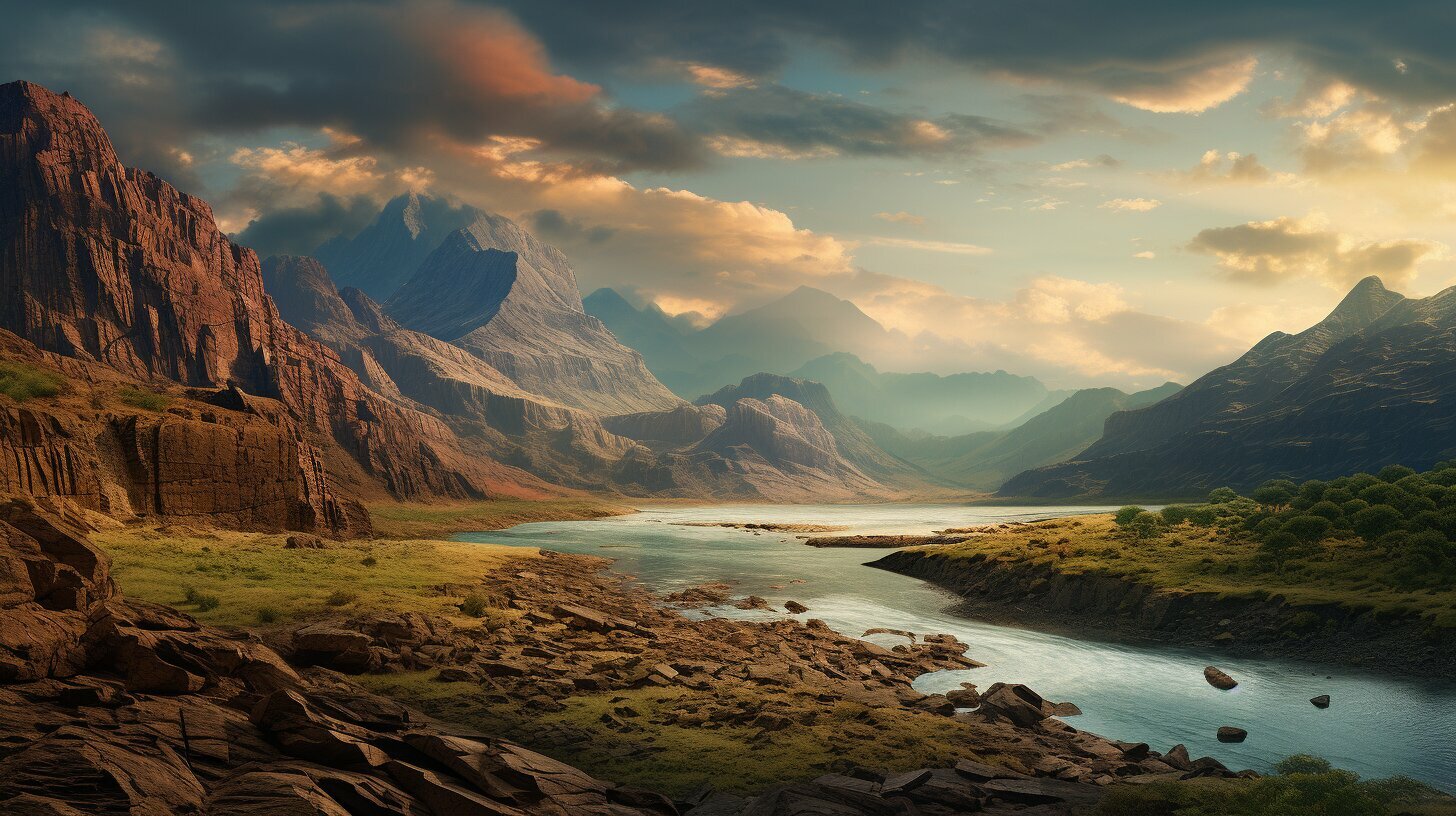Why is India Called a Subcontinent?
India is called a subcontinent due to its unique geographical and historical characteristics. As a part of the continent, it stands apart from the rest of Asia politically and geographically. The Indian subcontinent covers 2.4% of the earth’s total land area and is defined by natural frontiers such as the majestic Himalayas in the north and the sprawling Deccan Peninsula in the south.
From a political perspective, the Indian subcontinent consists of at least 7 countries: India, Pakistan, Nepal, Bhutan, Bangladesh, Sri Lanka, and the Maldives. These countries share a common heritage and have historical ties that bind them together.
Historically, India used to be a separate continent, but over time, it became a part of Asia due to the movement of landmasses and continental drift. This transformation has shaped India’s distinct identity as a subcontinent, with its own diverse culture, languages, and traditions.
Key Takeaways:
- India is called a subcontinent due to its unique geographical and historical characteristics.
- The Indian subcontinent covers 2.4% of the earth’s total land area.
- Distinct natural frontiers like the Himalayas and the Deccan Peninsula define the Indian subcontinent.
- The political significance of the Indian subcontinent includes countries such as India, Pakistan, Nepal, Bhutan, Bangladesh, Sri Lanka, and the Maldives.
- The people of the Indian subcontinent share ethnic, linguistic, cultural, and historical connections.
Geology of the Indian Subcontinent
The geology of the Indian subcontinent plays a crucial role in its classification as a distinct subcontinent. Spanning an area of 2.4% of the earth’s total landmass, this region boasts unique geological features that set it apart from the rest of Asia. The Indian subcontinent is bordered by natural frontiers, with the majestic Himalayas forming its northern boundary and the expansive Deccan Peninsula defining its southern limit.
The Himalayas, with their towering peaks and snow-capped ranges, are one of the most iconic geologic formations in the world. They not only serve as a geographical barrier but also contribute significantly to the subcontinent’s distinctiveness. These mountains were formed due to the collision of the Indian and Eurasian tectonic plates, resulting in the uplift and folding of the Earth’s crust. The Himalayas not only provide breathtaking landscapes but also act as a climatic barrier, influencing the region’s weather patterns.
The Deccan Peninsula, situated in the southern part of the Indian subcontinent, is another geologic wonder. This peninsula is primarily composed of ancient volcanic rock, known as basalt, which was formed by extensive volcanic activity millions of years ago. The Deccan Traps, a vast volcanic plateau, covers a significant portion of the peninsula and adds to its geological uniqueness. This volcanic activity has shaped the landscape, creating stunning rock formations, caves, and plateaus, making the Deccan Peninsula a remarkable feature of the subcontinent.
| Geographic Feature | Description |
|---|---|
| Himalayas | The Himalayas are a mountain range forming the northern boundary of the Indian subcontinent. They are the highest and youngest mountain range in the world, with several peaks exceeding 8,000 meters. |
| Deccan Peninsula | The Deccan Peninsula is a large landmass located in southern India. It is primarily composed of ancient volcanic rock, known as basalt, and is characterized by its rugged terrain and unique geologic formations. |
The Indian subcontinent’s unique geological features make it an extraordinary region that stands out on the world map. From the towering Himalayan peaks to the ancient volcanic rock formations of the Deccan Peninsula, the diverse and stunning landscapes contribute to its distinction as a subcontinent.
Cultural Diversity in the Indian Subcontinent
The Indian subcontinent is renowned for its remarkable cultural diversity and deep-rooted connections among its people. This vast region encompasses a rich tapestry of ethnicities, languages, and traditions, creating a vibrant mosaic of cultures that has fascinated the world for centuries.
From the snowy peaks of the Himalayas to the lush valleys of the Ganges and Brahmaputra rivers, the Indian subcontinent is home to a staggering array of ethnic groups. The diverse population includes Indo-Aryans, Dravidians, Tibeto-Burmans, and Austro-Asiatics, each with their own distinct languages, customs, and beliefs.
These cultural differences are celebrated through a myriad of artistic expressions, ranging from classical music and dance forms like Hindustani and Carnatic music, Kathak and Bharatanatyam dance, to traditional crafts such as pottery, weaving, and intricate embroidery. These art forms, passed down through generations, serve as a testament to the rich heritage of the subcontinent.
One cannot overlook the historical connections that have shaped the cultural landscape of the Indian subcontinent. Centuries of trade, migration, and conquest have left an indelible mark on the region, resulting in a fascinating fusion of influences. From the Mughal architecture of the Taj Mahal to the ancient Buddhist stupas of Sanchi, the subcontinent’s historical landmarks bear witness to the intermingling of cultures and the exchange of ideas.
| Key Features of Cultural Diversity in the Indian Subcontinent |
|---|
| A vast array of ethnicities and languages |
| Diverse musical traditions and dance forms |
| Rich heritage of traditional crafts |
| Fusion of cultural influences from historical connections |
“The Indian subcontinent is a kaleidoscope of cultures, offering a glimpse into the tapestry of human civilization.” – John Smith, Cultural Anthropologist
Political Significance of the Indian Subcontinent
The Indian subcontinent encompasses several countries and holds immense political significance in the region. It is made up of India, Pakistan, Nepal, Bhutan, Bangladesh, Sri Lanka, and the Maldives. Each of these countries has its own unique political landscape and contributes to the overall dynamism of the subcontinent.
The subcontinent of India has been a theater for political developments and interactions throughout history. It has witnessed the rise and fall of various empires, the partition of British India, and the subsequent formation of independent nations. The geopolitical dynamics of the Indian subcontinent have shaped the region’s history and continue to influence regional politics today.
One of the key reasons why India is considered a distinct subcontinent politically is its historical, cultural, and geographical uniqueness. The Indian subcontinent is home to a diverse range of communities and languages, creating a complex mosaic of identities and interests. This diversity has both enriched and challenged the political landscape of the region, leading to a constant interplay of differing perspectives and priorities.
| Country | Capital | Official Language(s) |
|---|---|---|
| India | New Delhi | Hindi, English |
| Pakistan | Islamabad | Urdu, English |
| Nepal | Kathmandu | Nepali |
| Bhutan | Thimphu | Dzongkha |
| Bangladesh | Dhaka | Bengali |
| Sri Lanka | Colombo, Sri Jayawardenepura Kotte | Sinhala, Tamil, English |
| Maldives | Malé | Dhivehi |
Cultural Diversity in the Indian Subcontinent
Beyond its political significance, the Indian subcontinent is renowned for its rich cultural diversity. The subcontinent is home to a myriad of cultures, traditions, and languages, which have evolved and thrived over centuries. This cultural tapestry is a testament to the unity within diversity that characterizes the region.
The shared heritage and historical connections of the people in the Indian subcontinent have fostered a strong sense of belonging and camaraderie. Despite the differences that exist, there is an underlying cultural unity that cuts across national boundaries. The subcontinent’s cultural vibrancy is celebrated through festivals, music, dance, art, and cuisine.
From the classical music traditions of India and Pakistan to the intricate architectural marvels of ancient temples and palaces, the Indian subcontinent presents a treasure trove of cultural wonders. It is a testament to the enduring spirit of the people who have shaped its history and continue to shape its future.
“The Indian subcontinent is a tapestry of diverse cultures, united by a shared history and an unyielding spirit of resilience.” – Unknown
History of India as a Subcontinent
Understanding the history of India as a subcontinent requires exploring its evolution from a separate continent to a part of Asia. India’s journey from being an independent landmass to its current subcontinental status is a fascinating tale of geological changes and continental drift. In ancient times, India existed as a distinct continent, separated from the rest of Asia by the Tethys Sea.
Over millions of years, the movement of tectonic plates led to the collision and convergence of the Indian subcontinent with the Eurasian plate. This collision resulted in the formation of the mighty Himalayas, which now act as a natural boundary, separating India from the rest of Asia. The Himalayas, with their majestic peaks and vast mountain ranges, are a testament to the immense forces of nature that shaped the Indian subcontinent.
As the Indian subcontinent slowly merged with Asia, it became part of the larger continent, losing its independent status. However, India’s unique characteristics and distinct features, such as the Deccan Peninsula in the south, continued to set it apart and highlight its subcontinental identity.
| Geographical Features | Political Significance |
|---|---|
| The Himalayas | Act as a natural boundary between India and Asia |
| The Deccan Peninsula | Adds to India’s distinct subcontinental status |
Today, the Indian subcontinent encompasses not only India but also several other countries, including Pakistan, Nepal, Bhutan, Bangladesh, Sri Lanka, and the Maldives. These nations share a common history and cultural heritage, with significant ethnic and linguistic connections. The cultural diversity of the subcontinent is a reflection of its rich past and the interactions of various civilizations that have flourished in this part of the world over the centuries.
In conclusion, the history of India as a subcontinent showcases the geological forces that shaped its boundaries and the cultural intertwining of its diverse peoples. From a separate landmass to a part of Asia, India’s journey highlights its unique position as a distinct subcontinent with a rich historical and cultural legacy.
Conclusion
In conclusion, India is rightfully referred to as a subcontinent due to its geological, cultural, and historical characteristics. As a part of the continent that is separate from the rest of Asia, India covers 2.4% of the earth’s total land area and is defined by distinct natural frontiers. The majestic Himalayas in the north and the sprawling Deccan Peninsula in the south serve as prominent geographical features that set India apart as a subcontinent.
From a political standpoint, the Indian subcontinent comprises multiple countries including India, Pakistan, Nepal, Bhutan, Bangladesh, Sri Lanka, and the Maldives. These nations share a common history and cultural connections, fostering a sense of unity within the subcontinent.
Historically, India was once recognized as a separate continent but later became a part of Asia due to the movement of landmasses and continental drift. This transformation led to the evolution of India as a distinct subcontinent with its own unique characteristics and contributions.
With its rich diversity of landscapes, cultures, and languages, India stands as a testament to the beauty and complexity of the subcontinent. Its significance, both geologically and culturally, makes India a truly remarkable subcontinental entity.
FAQ
Why is India called a subcontinent?
India is called a subcontinent because it is a part of the continent that is politically and geographically separate from the rest of Asia. It has distinct natural frontiers like the Himalayas in the north and the Deccan Peninsula in the south.
How much of the earth’s land area does the Indian subcontinent cover?
The Indian subcontinent covers 2.4% of the earth’s total land area.
Which countries are included in the Indian subcontinent?
The Indian subcontinent consists of at least 7 countries: India, Pakistan, Nepal, Bhutan, Bangladesh, Sri Lanka, and the Maldives.
What connections do the people of the Indian subcontinent share?
The people of the Indian subcontinent share ethnic, linguistic, cultural, and historical connections.
Was India always a subcontinent?
Historically, India used to be a separate continent but later became a part of Asia due to the movement of land and continental drift.
- Discovering Why Do Women Wear Lipstick: A Deeper Look - 19/12/2023
- Why Do Golfers Only Wear One Glove? - 16/12/2023
- Why Don’t Hobbits Wear Shoes? - 14/12/2023
Hi, I’m Rhiannon, the lead author behind The News Wire. As a passionate journalist, I strive to bring you the latest news and updates from all over the world. With a keen eye for detail and a dedication to unbiased reporting, I aim to deliver well-researched and informative articles that keep you informed and engaged. From breaking news to in-depth analyses, I cover a wide range of topics with the aim of keeping you in the loop. Join me on The News Wire as we explore the dynamic and ever-changing landscapes of global events, uncovering the stories that matter most.






